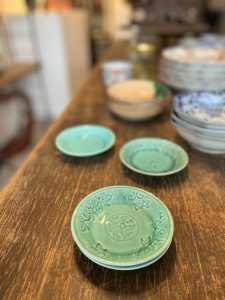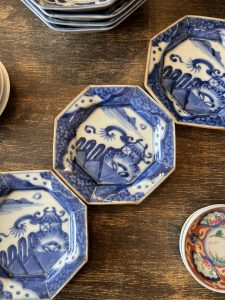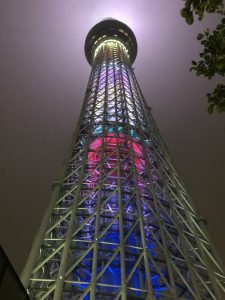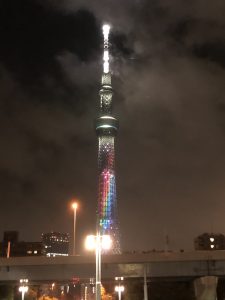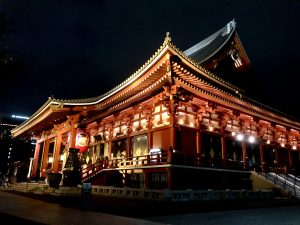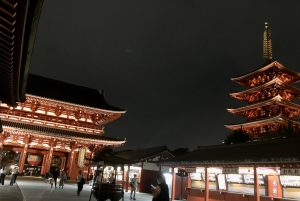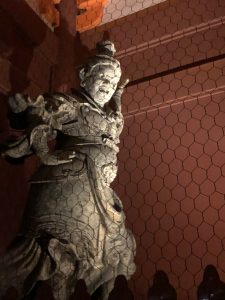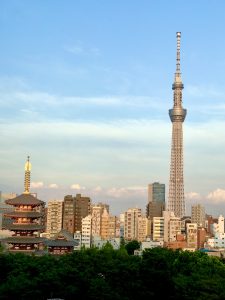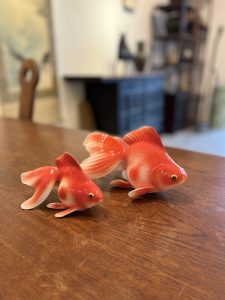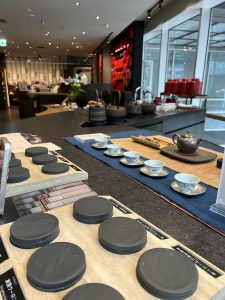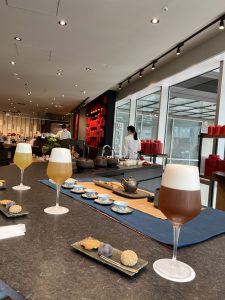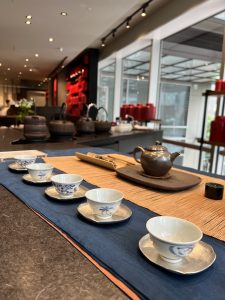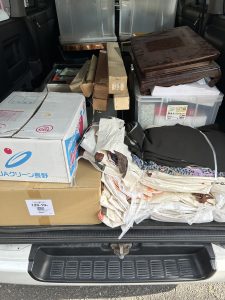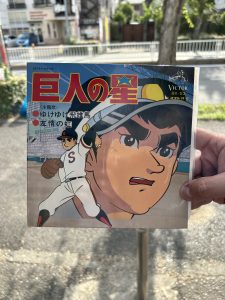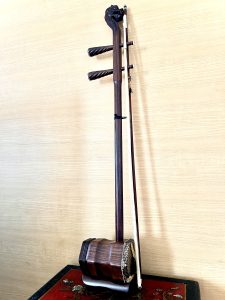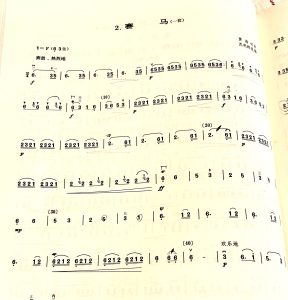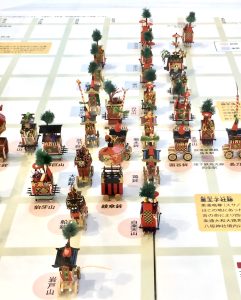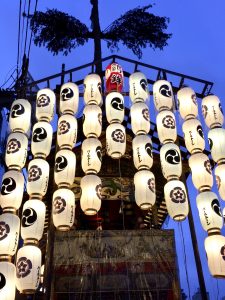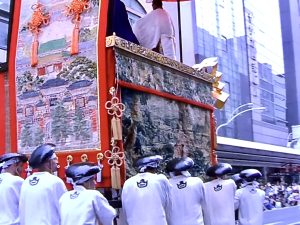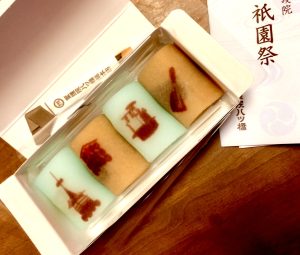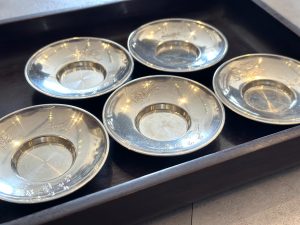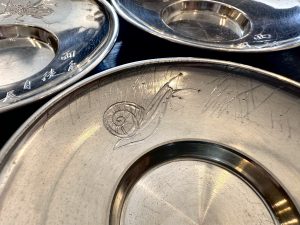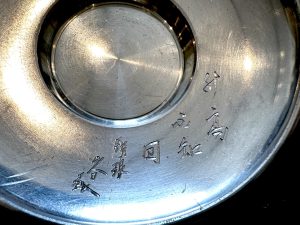城山八幡宮の大茅輪くぐり(愛知県名古屋市千種区 骨董買取 古美術風光舎)
2023.07.14
みなさまこんにちは、スタッフYでございます。
気がつくと、7月は半分過ぎておりましたね。
ぼーっと過ごしていたわけではないのですが、夏本番にむけてのこの時期お正月の前くらい毎年落ち着かないのと時間が少しだけ早く過ぎるような気がいたします。ですがこの時期は嫌いではない。いろいろなことが少し逸る気持ちを抑え、夏に向いている空気感とその移り変わりに勢いがあるからでしょうか。
そういえば朝からセミの鳴き声が聞こえているのに気が付いたり、学期末の三者面談後の真っ黒に焼けた男子中学生とその母が一緒に帰るその微妙な距離にちょっと笑えたり、自分、毎年夏用のバックを探しているなと気づいたり、季節の移り変わりを見つけることはちょっと楽しい。ここ最近でもこれだけ気づいてしまいました。
ですが、今年の夏も各所で多発しているゲリラ豪雨やその災害のニュースに心を痛める季節でもあるな…などと思い巡らしながら今朝も通勤していたところ、ご近所の城山八幡宮の大茅輪くぐりの横断幕が目に入りました。
ここにも大切な季節の移り変わりを発見しましたね、今年も始まるようです。
毎年ここ城山八幡宮で行われている夏の神事、茅輪神事。
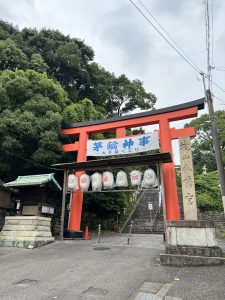
夏になると、こちらの神社のみならず各所の神社で執り行われる茅輪神事ですが、いつも引き込まれるようにくぐらねば!と勢いよくくぐってはおりますが、先日はやってしまいましたよ笑。別の神社ですが、周る方向を間違えたことに気が付き、御護りは半減するのかな…などと苦笑いしながらもう一度くぐり直してまいりました。私だけでしょう、こんな恥ずかしいことをやっているのは。
そんな茅輪神事は、「輪くぐり」・「茅の輪くぐり」とも呼ばれおりまして、スサノヲノ命の故事に習い、祓芦(はらえよし)を持って茅の輪をくぐり、茅(ち・ちがや)の働きによって無病息災・諸難消除・疫病退散・健康長寿を御護り戴く夏の神事であるのですが、詳しくは知らなかったのですが、管貫とも呼ばれ、祓芦は「あし」を「よし」と云い替えて「よき事」を招く「換言」の一種であり、茅は芦・管・ススキ等の総称でもあるようですね。
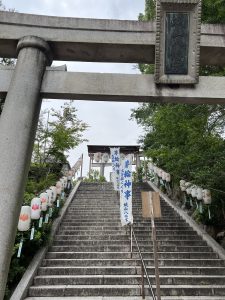
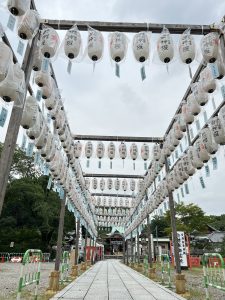
故事によりますと、神代、武塔神(スサノヲノ命)が旅の途中、土民の兄弟である蘇民将来と巨旦将来の二人に宿を求めたところ、裕福な弟の巨旦将来は邪険に断ったが、貧しい兄の蘇民将来は快くお泊めし親切にもてなした際に、スサノヲノ命は「蘇民将来の子孫に、腰に茅の輪をつけておれば疫病を防げるであろう」と教えます。その後大疫病が起こったのですが、蘇民将来の村のみはその茅の輪のおかげで、難を逃れたことが茅輪神事・祓芦の起源になっているようでして、城山八幡宮の大茅輪神事でも、もちろんこの祓芦をうけることができます。
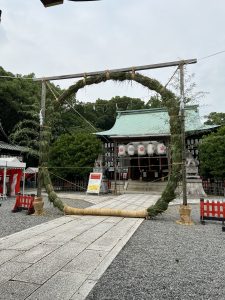
(明日の神事の準備中でしたので、本日はくぐることはできませんでした。)
その祓芦をひとりひとり1本づつ持ち、祓芦で身を清めながら輪をくぐり、その祓芦・祓串とも立冬の頃まで家の中で祀りますが、独り占めにすれば福は必ず消え去り、分け与えれば福は必ず増えるとのことですので、あくまでも一人1本ずつですので欲張ってはいけないようですね。
また、城山八幡宮ではこの大茅輪神事と共に、小児の虫封じ『赤丸神事』、災厄除け・息災守護の『息災鈴祓』、提灯奉納の『献燈行事』等々、三日間にわたり夏の夜祭りを斎行しており、境内は献燈の灯りが浮かび上がり、山の手に夏を呼ぶ祭りとして毎年本当に多くの参拝で賑わいます。
夏の夜の涼をたずねて、浴衣掛けでみんなが「夏がきた!。」と楽しめるお祭ですので、是非城山界隈遊びにいらしてください。
それでは、ごきげんよう。
Hello everyone, this is Staff Y.
Before I know it, half of July has passed.
It’s not that I’ve been spending the month in a daze, but it seems like every year I feel as restless as I do before New Year’s, and time seems to pass a little bit faster during this time of year as we head into the summer season. But I don’t dislike this time of year, perhaps it is because I can suppress my feelings of being a little distracted by various things, and there is a sense of momentum in the air as we move toward summer and its transition.
I notice the sound of cicadas chirping in the morning, I laugh at the subtle distance between the blackened junior high school boys and their mothers as they walk home together after the end-of-term parent-teacher conference, I realize that every year I look for my summer bag, and I enjoy finding the change in the seasons. I have noticed this much recently.
However, as I was commuting to work this morning, I noticed the banner of the “Great Chigurin Festival” at Shiroyama Hachimangu Shrine in my neighborhood, as I was thinking about the many guerrilla downpours that have been occurring in various places this summer, and how heartbreaking the news of such disasters is.
I found another important seasonal change here, and it looks like it will start again this year.
The thatch-ringing ritual is a summer ritual held here at Shiroyama Hachimangu Shrine every year.
The thatched-rope ritual is held not only at this shrine but also at other shrines in summer, and I always have to go through it as if I am being pulled in! I always go through it with great vigor, but the other day I did it, lol. I realized that I went in the wrong direction and had to go through the shrine again with a wry smile on my face, wondering if the blessing would be less than half. I must be the only one who does such embarrassing things.
The thatched-rope ritual, also called “ring-kuguri” or “thatch-rope-kuguri,” is a summer ritual to pray for good health and long life, to get rid of various misfortunes, to get rid of epidemics, and to be protected by the work of thatch, according to the legend of Susanowo-no-mikoto. I did not know the details, but it is also called “Kan-nuki,” and purification of “ashi” is a kind of “kanten,” which means to change “ashi” to “good” and invite “good things,” and “thatch” is a general term for ashi, tube, awn, etc. According to the legend, the gods are said to be the ancestors of the gods.
According to the legend, during the Kami period, the god Muto (Susanowo-no-mikoto) asked the two brothers, Somin-mushorai and Giantan-mushorai, to lodge with him on his journey. If you put a ring of thatch around your waist, you will be able to prevent a plague from spreading. The origin of the thatched-rope ritual and the purification of ashes is said to be the fact that the villagers escaped the plague thanks to the thatched-rope.
Each person is supposed to take one of these purifying ashes with him or her, and go through the purification procession while purifying himself or herself with the purifying ashi, and both the purifying ashi and the purifying stick are enshrined in the house until around the time of the first winter.
In addition to the “Oo Kayawa Ritual,” Shiroyama Hachimangu Shrine holds a three-day summer night festival that includes the “Akamaru Ritual” to seal away insects from children, the “Exorcism Bell” to ward off bad luck and protect people from misfortune, and the “Offering Lantern Event” to dedicate lanterns.
The festival is a place where everyone can enjoy the cool of a summer night and think, “Summer has come! Please come and visit us in the Shiroyama area.
Have a good day.
*******************
ご実家の整理やお片付けなどをされている方のご相談などが多くございます。
お片付けなどくれぐれもご無理のないようになさってくださいませ。
風光舎では古美術品や骨董品の他にも絵画や宝石、趣味のお品など様々なジャンルのものを買受しております。
お片付けをされていて、こういうものでもいいのかしらと迷われているものでも、どうぞお気軽にご相談下さいませ。
また風光舎は、出張買取も強化しております。ご近所はもちろん、愛知県内、岐阜県、三重県その他の県へも出張いたします。
まずは、お電話お待ちしております。
愛知県名古屋市千種区姫池通
骨董 買取【古美術 風光舎 名古屋店】
TEL052(734)8444
10:00-17:00 OPEN
#出張買取#骨董#古美術#骨董品#絵画#版画#茶道具#刀剣#彫刻

